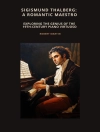In ‘Musical Instruments, Historic, Rare and Unique, ‘ Alfred J. Hipkins presents an exhaustive exploration of musical devices spanning various cultures and historical periods. The text is characterized by its meticulous attention to detail and an academic rigor that invites readers into the intricate world of musical craftsmanship. Hipkins delves into the evolution of instruments, highlighting their aesthetic, cultural, and historical significance, thereby situating each piece not merely as a tool for music, but as a relic of human expression. His prose elegantly navigates the intersections of art and anthropology, providing a rich literary context that elevates the discussion of musicology. Alfred J. Hipkins, a 19th-century musicologist and instrument maker, was deeply influenced by the burgeoning interest in ethnomusicology and the preservation of cultural artifacts during his lifetime. His background as an instrument maker endowed him with a unique perspective on the technical complexities of musical devices, lending authenticity to his descriptions. His passion for collecting rare musical instruments further motivated his scholarly endeavors, affording him a rare insight into their historical contexts and significance. This book serves as an invaluable resource for musicians, historians, and collectors alike, offering a profound understanding of the cultural narratives embodied in musical instruments. Hipkins’s exhaustive research and eloquent prose invite readers to appreciate the beauty and significance of instruments beyond mere sound, making it a must-read for anyone interested in the rich tapestry of music history.
लेखक के बारे में
Alfred James Hipkins (1826–1903) was an eminent English musical historian and pianist, renowned for his deep knowledge of the history of musical instruments. He worked primarily in the nineteenth century and contributed significantly to the scholarly understanding of musical instrument evolution. His most notable work, ‘Musical Instruments, Historic, Rare and Unique’, is celebrated for its detailed illustrations and comprehensive insights into the instruments of his time and before. Hipkins’ approach combined meticulous research with a genuine affection for music, which allowed him not only to catalog instruments but to delve into their cultural and historical contexts. His literary style was marked by a clear, informative, and scholarly tone, which made his writing accessible to both academics and music enthusiasts alike. In ‘Musical Instruments’, Hipkins provided readers with not just a visual record, through the exquisite illustrations by William Gibb, but also an auditory sense of the past by including detailed descriptions of the sounds and techniques associated with each instrument. As a pianist, Hipkins was intimately familiar with the performance aspects of music, which further informed his historical writings. His work continues to serve as a foundational reference for researchers and historians studying the evolution of musical instruments and is considered a seminal work in the field of musicology.












